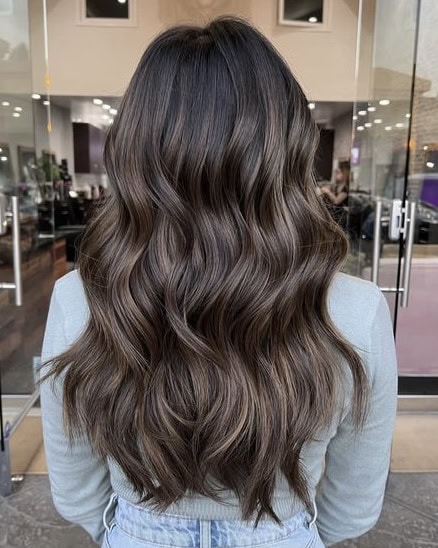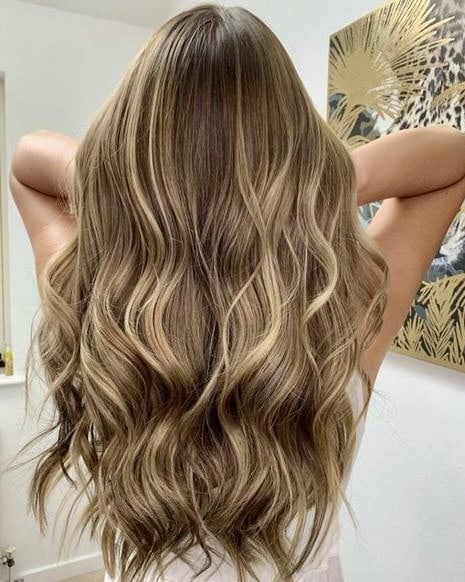
10 Signs Of Healthy Hair
Let’s be real. Your hair is often one of the first things a person notices about you. It can be a defining feature that accentuates your other features, like your eye color and skin tone. Personally, I feel my most confident on a good hair day. And good hair days start with healthy hair. So friends, I think we can all agree that keeping your hair healthy is not only important for aesthetic purposes, but for how you show up in the world mentally and emotionally.
So, how do you know if your hair is healthy or unhealthy? The condition of your hair can reveal a lot if you know what to look for – from hygiene to vitamin deficiency. So today, I’m sharing the signs to look out for. Here’s how to know whether or not you have healthy hair.
How To Tell If Your Hair Is Healthy
From hair color to texture, healthy hair feels and looks different for everyone. Determining the health of your hair begins with knowing your hair type. There are many different hair types, but don’t worry if you don’t know yours yet! A standard hair typing system can help you identify the type of hair you have. However, keep in mind that a lot of people don’t fit into one specific type. It’s common to have locks that fit one type on one part of your scalp and a different type on another. But don’t overthink it. These types are just meant to help you identify what type of hair you generally have so you can get a better idea of your hair needs.
To determine your hair type, first identify which category it falls under:
- Type 1: Straight
- Type 2: Wavy
- Type 3: Curly
- Type 4: Coily
Hair types are further divided into subcategories based on variations in the hair’s texture.
- Type 1A: Very straight and fine
- Type 1B: Less straight, with some bends
- Type 1C: Straight with a coarser texture
- Type 2A: Soft waves and fine
- Type 2B: More defined, S-shaped waves
- Type 2C: Deep, or well-defined S-shaped waves
- Type 3A: Loose, soft curls
- Type 3B: Tight and springy curls
- Type 3C: S- or Z-shaped curls that bounce back when stretched
- Type 4A: Loose coils
- Type 4B: Zig-zag coils
- Type 4C: Tight coils
Now that you have a better idea of your hair type, it should be easier to spot signs of damaged hair and determine if your hair is healthy.

10 Signs Of Healthy Hair
Shine
Hair shine is another sign of healthy hair. With hair that is properly moisturized, the cuticle lies flat, creating a surface for light to bounce off of, giving it that shiny appearance.
Hair lacking moisture is not only dull in appearance, but it’s also weaker. However, keep in mind that curly hair won’t appear as shiny as straight hair because of its shape. People with type 3C hair shouldn’t expect their hair to achieve the same shine as type 1A hair.
Smooth Texture
We tend to think of texture in terms of our overall hair texture, but to spot this sign of healthy hair, you want to look at the texture of each strand. Healthy hair will slide easily through your fingers, while damaged hair feels rough and bumpy. This is often caused by a lifted or missing cuticle layer.
Minimal Split Ends
Take a closer look at the ends of your hair. If they’re intact, not split or broken, that’s a good sign your hair is healthy. The less breakage, the healthier your hair. Healthy hair is strong and resistant to damage.
Split ends are a tell-tale sign of unhealthy hair. A few split ends here, and there are to be expected, but unhealthy hair will have a lot of breakage and split ends.

Healthy Scalp
Healthy hair requires a healthy scalp. A well-maintained scalp is the perfect environment for healthy hair follicles, which is important for growing and maintaining healthy hair. If you notice things like flakiness, irritation, or oiliness, you might be dealing with scalp issues that inhibit healthy hair.
Appropriate Shedding
Well-nourished locks follow a constant hair growth cycle. Ideally, you have hair growing and falling out all the time. On average, about 50-100 strands of hair fall out each day. If you’re losing significantly more than that daily, it could signify a more serious condition. However, hair loss can be attributed to a variety of factors, so your best bet is to talk to a healthcare professional about your concerns.
Easily Detangled
Healthy hair also detangles easily. This is because well-nourished hair has closed cuticles that lie flat and are smoother in texture, making it more difficult for them to get tangled up in other hairs.
Hair Elasticity
Healthy hair is elastic, which means it can be easily styled. Unhealthy hair is hard to style, and if it is styled, it usually comes undone easily.
There are several “tests” that can tell you more about your hair. To determine your hair’s elasticity, try this test:
- While your hair is wet, pick a strand of hair, hold it at the root to prevent pulling, and use your other hand to carefully stretch the strand.
- Let go of the hair. If the strand stretches and then returns to its original length, it’s elastic.
- If the strand breaks or it doesn’t go back to its original shape, it has poor elasticity.

Growth
Hair growth is another good sign. The rate of growth varies from one person to the next, but even slow growth is better than none at all. The average person’s hair grows about half an inch per month. If you notice that your hair hasn’t gotten any longer in quite some time, it could be a sign that your hair needs some attention.
The Hair Follicle Test
The hair follicle test can show you if there’s build-up in your hair follicles, which can weaken the hair and cause hair loss.
To do the hair follicle test, gently pluck a few strands of hair, pulling as close to your scalp as you can, to ensure the hair root is removed. Then use a magnifying glass (or the magnifier app on your phone) to look closely at the root. If it’s round and bulbous, that’s a good sign.
If it’s thin and brittle-looking, you might want to consider switching your hair care products, like your shampoo and conditioner. Look for products formulated without ingredients that will linger on your hair and scalp.
Using the right shampoo and conditioner is especially important for color-treated hair. Learn more in my post on how to take care of highlighted hair.
The Hair Porosity Test
The hair porosity test is another great at-home test you can use to check the health of your hair. For this test, place a few strands of your hair in water and watch what happens. Healthy hair will float, because it’s already moisturized and naturally buoyant. Brittle hair will sink because it’s dry, and the structure is damaged, causing it to quickly absorb water.
Knowing the signs of healthy hair makes it easier to maintain your beautiful locks and fix issues before they get worse.
Healthy, beautiful hair works wonders for your self-confidence. Use the information in this post to learn more about your hair, so that you can maintain or achieve a healthy scalp and well-nourished hair.
Also, be sure to check out out my DIY coconut milk hair mask that can work wonders on your hair. Then, head over to the blog for more information on beauty, style, wellness, and more.

